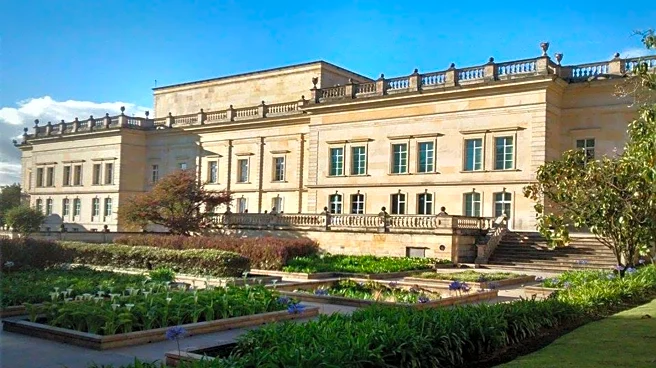What is the story about?
What's Happening?
Tate Britain has announced plans to transform its Millbank entrance with new Mediterranean and East Asian-inspired green spaces and a 'garden classroom' for children. The proposal, awaiting permission from Westminster City Council, aims to replace existing open spaces with a large, biodiverse public garden. The designs, created by architects Feilden Fowles, focus on softening the gallery's external appearance. The museum plans to install a Mediterranean-inspired garden to the south and a new natural pond. The north section will feature a green space inspired by East Asian woodland planting, including a water feature, event space, and expanded external café seating. The garden classroom, a timber-framed pavilion clad in stone, will serve as a learning space for schools, community groups, and volunteers. The proposal includes removing Grade II listed curved railings along the Millbank entrance and relocating the taxi rank to Atterbury Street. Despite some objections from the Victorian Society and Historic Buildings and Places, council officers believe the plans will deliver significant public benefits.
Why It's Important?
The proposed development at Tate Britain is significant as it aims to enhance the visitor experience by integrating natural elements and educational spaces into the gallery's environment. This initiative reflects a growing trend in cultural institutions to create more engaging and interactive spaces for visitors, particularly schoolchildren. By incorporating diverse plantings and a dedicated learning area, Tate Britain is positioning itself as a leader in innovative museum design. The project also highlights the importance of balancing historical preservation with modern enhancements, as evidenced by the objections from heritage groups. If successful, the development could serve as a model for other institutions seeking to improve visitor engagement and educational outreach.
What's Next?
Westminster City's Licensing Committee is scheduled to review the application on September 30. If approved, Tate Britain will proceed with the construction of the new gardens and classroom. The museum will likely engage with community groups and schools to maximize the educational potential of the new spaces. Stakeholders, including Historic England and Transport for London, will continue to monitor the project's impact on the site's historical integrity. The outcome of this proposal could influence future developments in cultural institutions across the UK, as they seek to balance modernization with heritage conservation.
AI Generated Content
Do you find this article useful?














